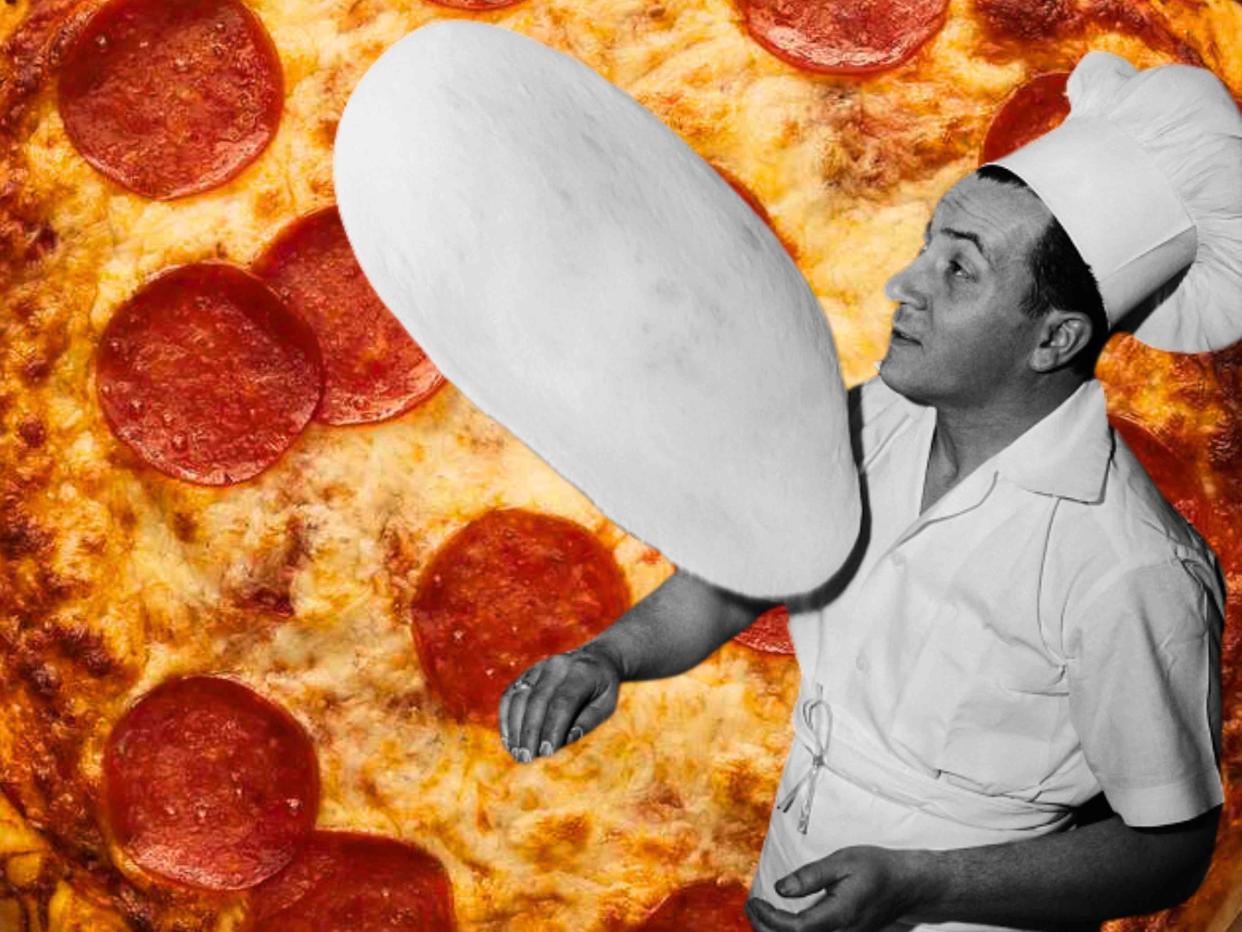Who Invented Pizza—And Were They Italian?
Plus, how did it become so popular?

DotDash Meredith Food Studios, Josef Scaylea/Getty Images
There are many versions of pizza. Some deny it. Others accept it. We have cheese pizzas, pizzas with basil, thin, round, and square pizzas, Chicago pizza, New York pizza, and much more.
With plenty of fast food slices as well as freezer buys from the grocery store, pizza is beyond popular. And with how popular this food is, the question of where our love of pizza comes from is more relevant.
But asking who invented pizza is like asking who invented music. Nearly every culture has some form of tune, and nearly every culture has put together a flatbread with toppings. But a pizza is not just flatbread with toppings. It is Italian in nature, and now a food made around the world in countless ways.

When Was Pizza Invented?
Pizza, as many know it, dates back hundreds of years. Soldiers and street vendors were cooking flatbreads with cheese in the time of antiquity. The innovation of tomatoes on flatbread arrived in the 16th century, when tomatoes first arrived in Europe.
But the popularity of pizza did not pick up until the 1800s. In Naples, the Neapolitans made quick work of using tomatoes and other toppings, and pizza grew as a food for the poor, for workers, and even for the King and Queen when they visited this city after the unification of Italy.
King Umberto I and Queen Margherita traveled to Naples in 1889 and requested to try pizzas. One of the Queen’s favorite creations was a pie garnished with tomatoes, mozzarella, and basil—the colors of the Italian flag. After the visit, this pizza was named in her honor.
This style of Margherita pizza had been served in Naples for most of the century already, but before this visit, the dish lacked a proper name. Whether this story is true is up for debate, as some question its validity, but nonetheless, the chef who likely served the royals played a pinnacle role in pioneering pizza in Naples.
Who Invented Pizza?
Raffaele Esposito, the chef at the center of this story, was one of the most famous pizza makers at the time, and if anyone was likely to serve the king and queen, it would have been him. Some consider him a father of modern pizza, and his pizza shop, now named Pizzeria Brandi, still exists in Naples.
If any city could claim credit for inventing something, Naples would be on this list for pizza. The hands of countless cooks and the heat from countless kitchens churned out fresh dough and sauce for the people in this city for hundreds of years.

Sara Haas
Pizza In Italy
Outside of Naples, Pizza took longer to catch on. It was not always the most prestigious food to many Italians but today, pizza is a food of cultural pride for many Italians. There are organizations like the Verace Pizza Napoletana Association that work to sustain and define what pizza means.
According to this association, Neapolitan pizza from Naples is made in a specific way, like Champagne is a specific type of wine from the region of Champagne, France. A true Neapolitan pizza is about 14 inches round, with swollen, raised edges, and free of burns. It must be soft and fragrant, and made with flour, water, salt, and yeast. There are specific toppings that should be used and a specific temperature and time the pie should be cooked at as well.
But Italy doesn’t just serve Neapolitan pizzas, so there are plenty of pizzas that have come out of Italy. They might be quite as varied as what can be found in the United States, but this country will always be the home of pizza.
Pizza in The United States
Pizza first appeared in the United States at the turn of the 20th century, thanks to Italian immigrants coming between 1880 and 1920. The first pizza shop came in 1905 when Gennaro Lombardi, living in New York City, applied for the first license to make and sell pizza in the country.
Initially, a pizza could only be bought as a pie. There were no slices, so it was a great option to share as a family, as coworkers, or if you are trying to work off a hefty buzz with friends. Many pizza shops were also taverns, so they were open late.
Other popular pizza shops include Joe's Tomato Pies, which opened in Trenton, New Jersey in 1912, and Totonno's in Coney Island in 1924. Over the next decade, pizza popped up in New Haven, Connecticut, Boston, and San Francisco. In 1943, Ike Sewell opened Uno's and Chicago pizza was born.
Up until the 1950s, pizza “was still considered a novelty ethnic food limited to Italian neighborhoods, small-town taverns, and back street bistros,” writes Patricia Wells in The New York Times. But when American soldiers stationed in Italy returned home from World War II, there was a much bigger appetite for pizza.
During the second half of the 20th century, pizza became ubiquitous. The rise of fast food pizza appeared as well as the fancy pizza. Almost like Starbucks, you don’t need to travel too far to find a shop serving a slice.

Dotdash Meredith Food Studios
Try some of our best pizza recipes:
Read the original article on All Recipes.
